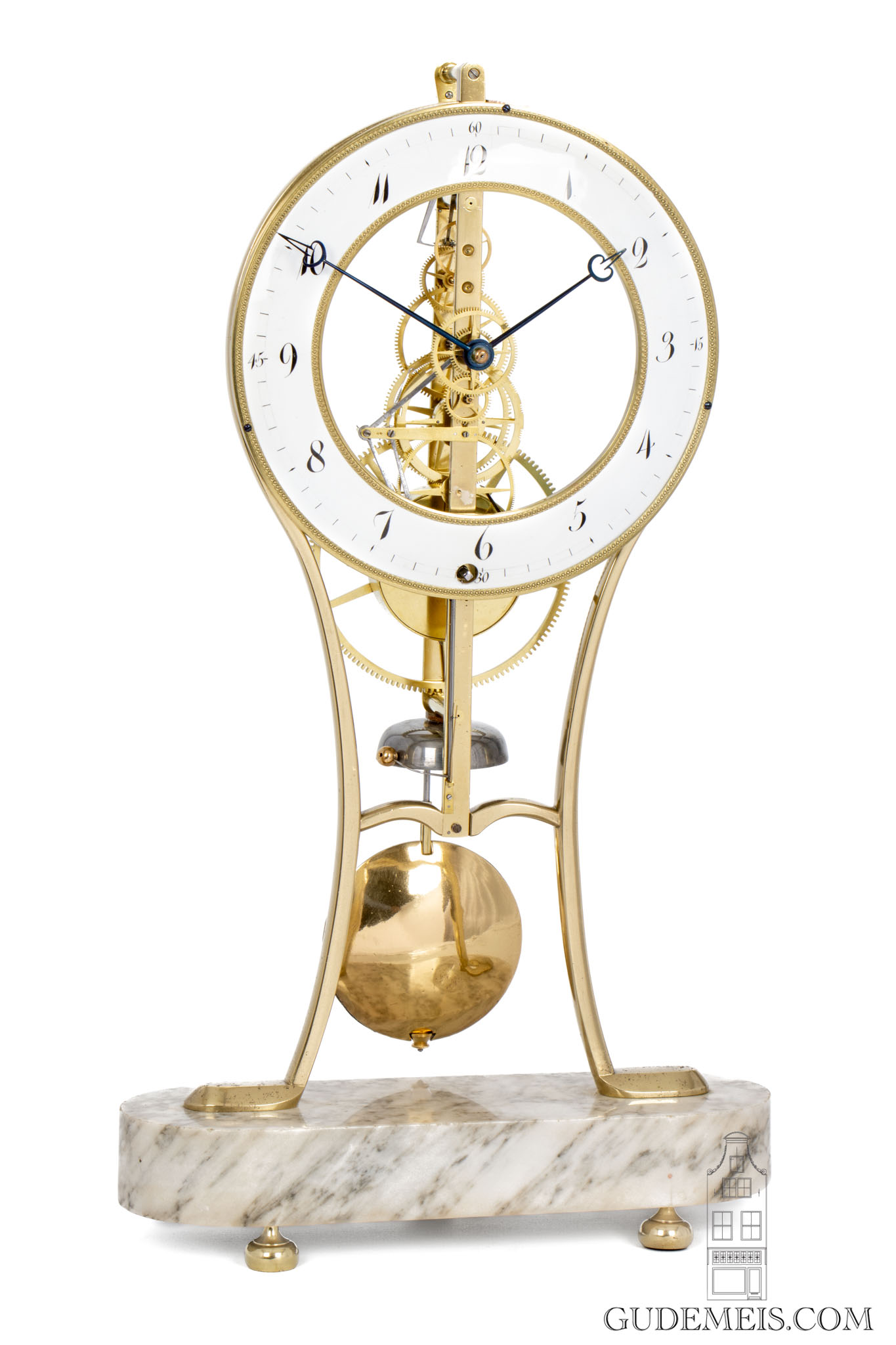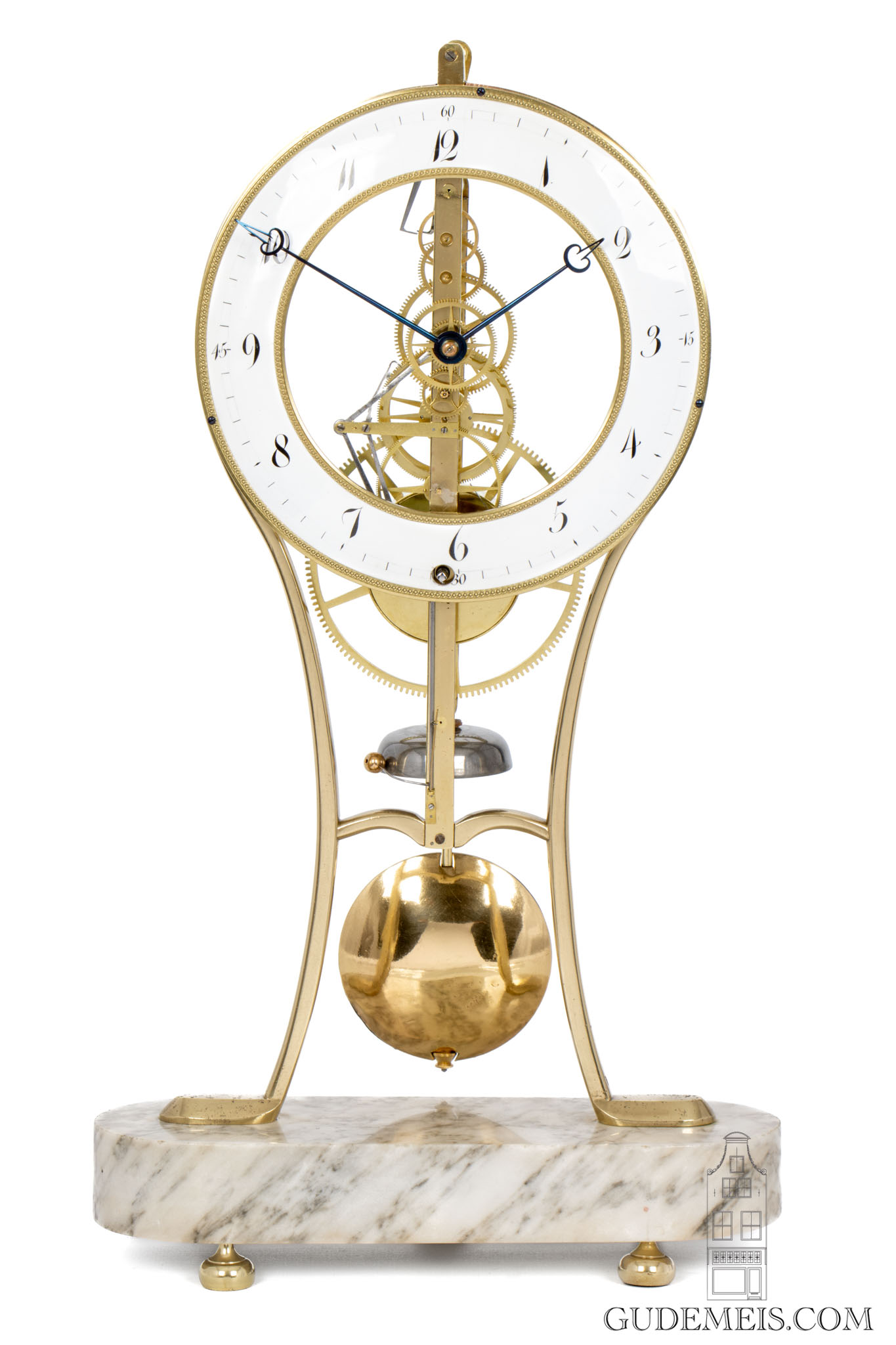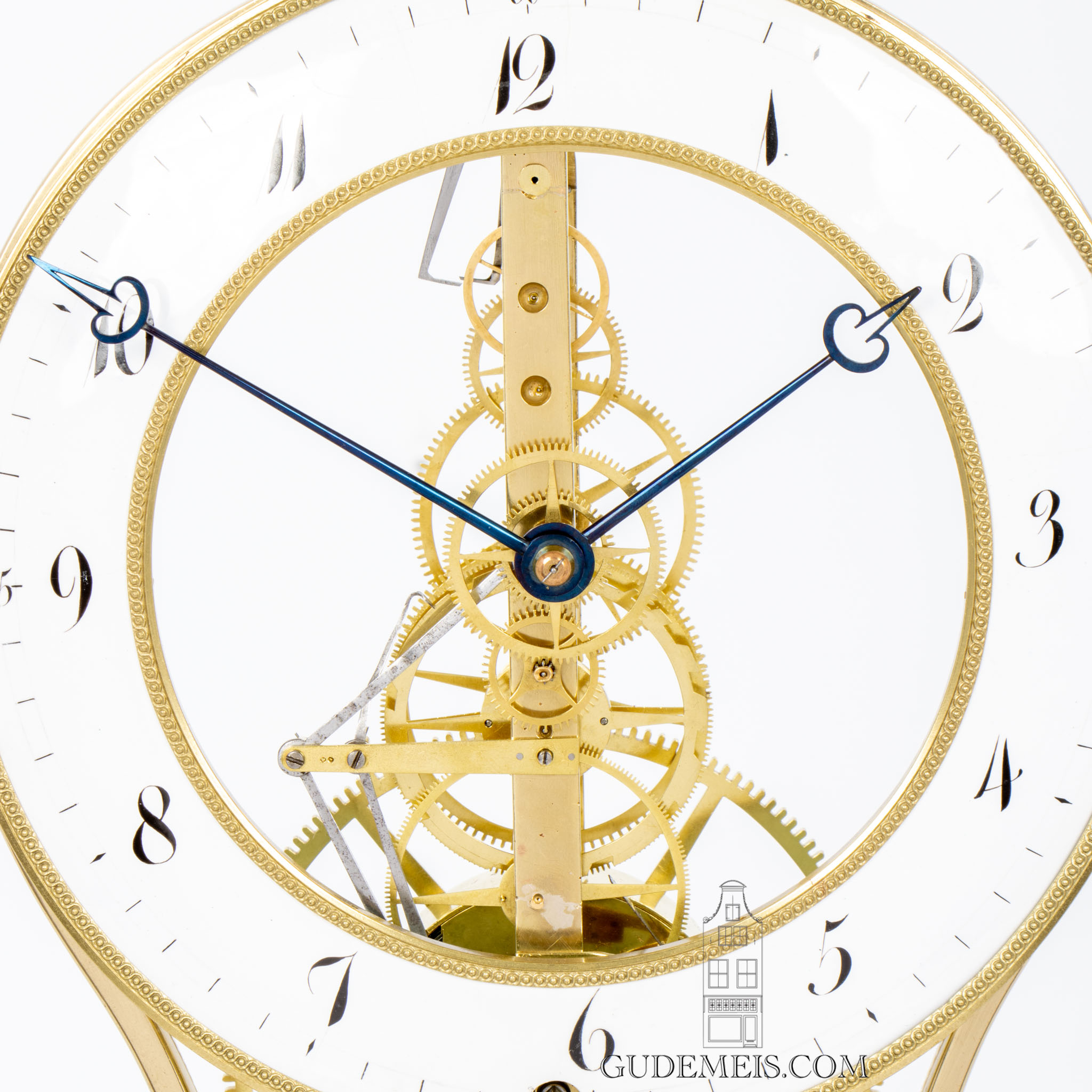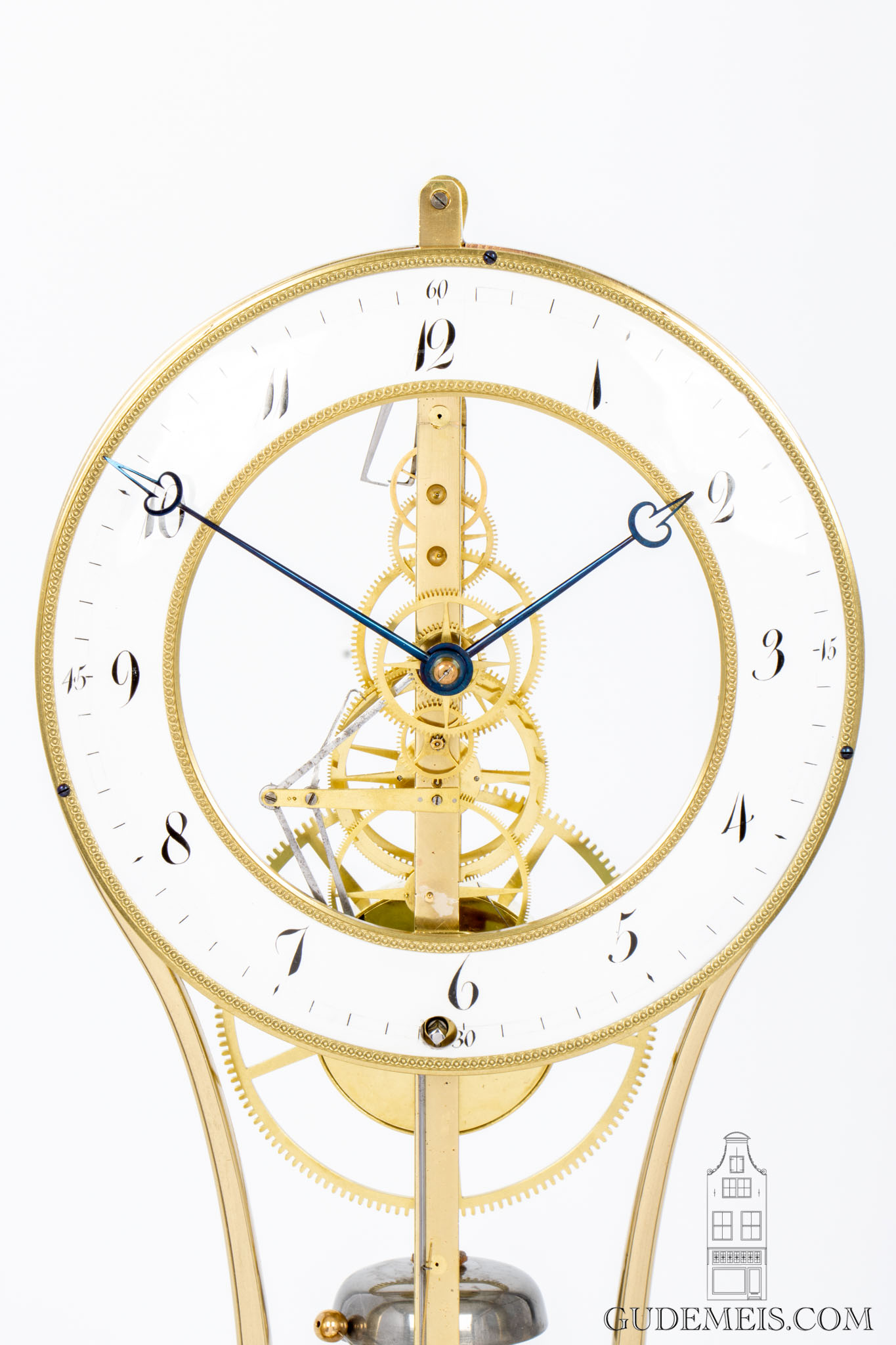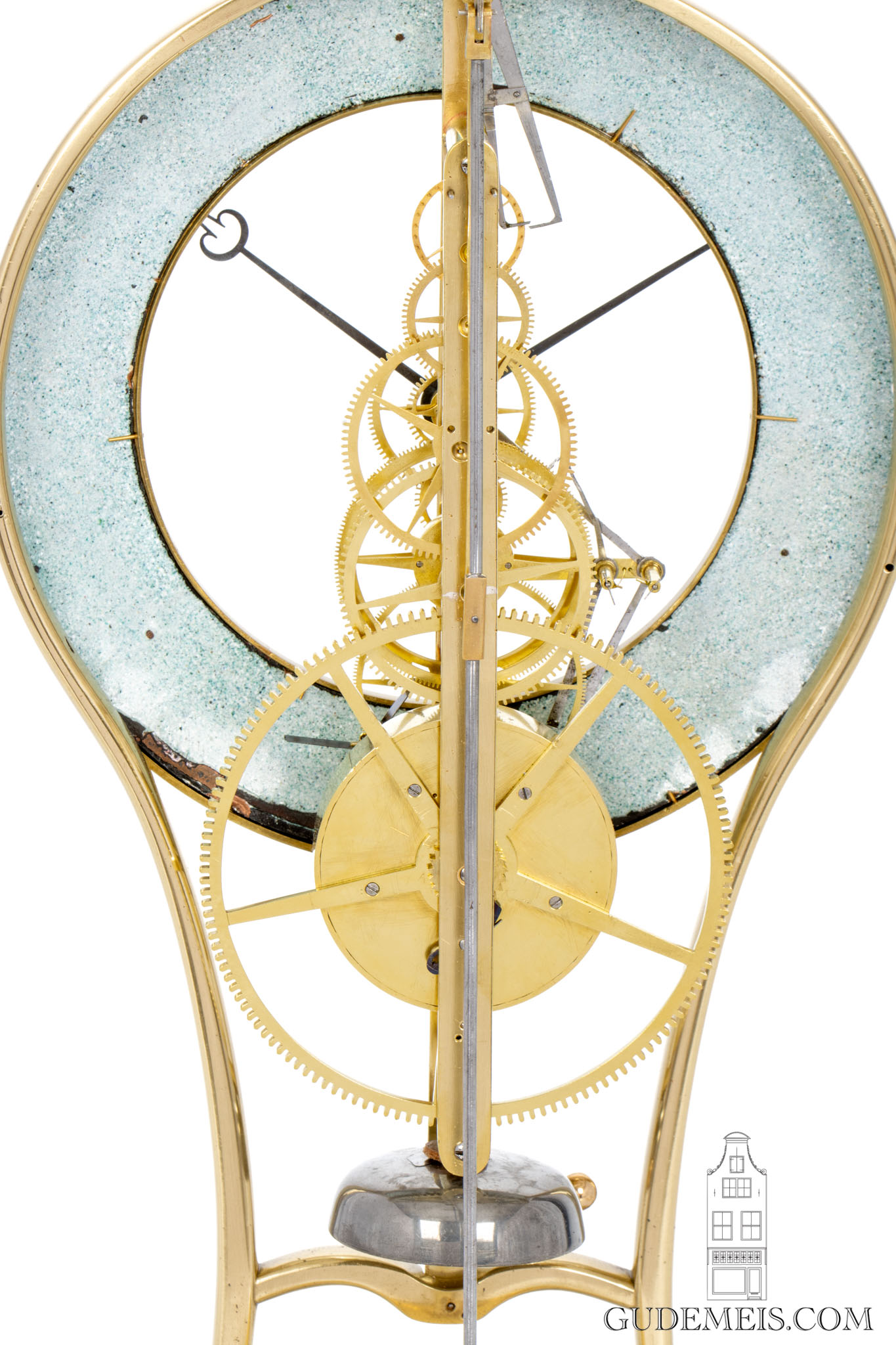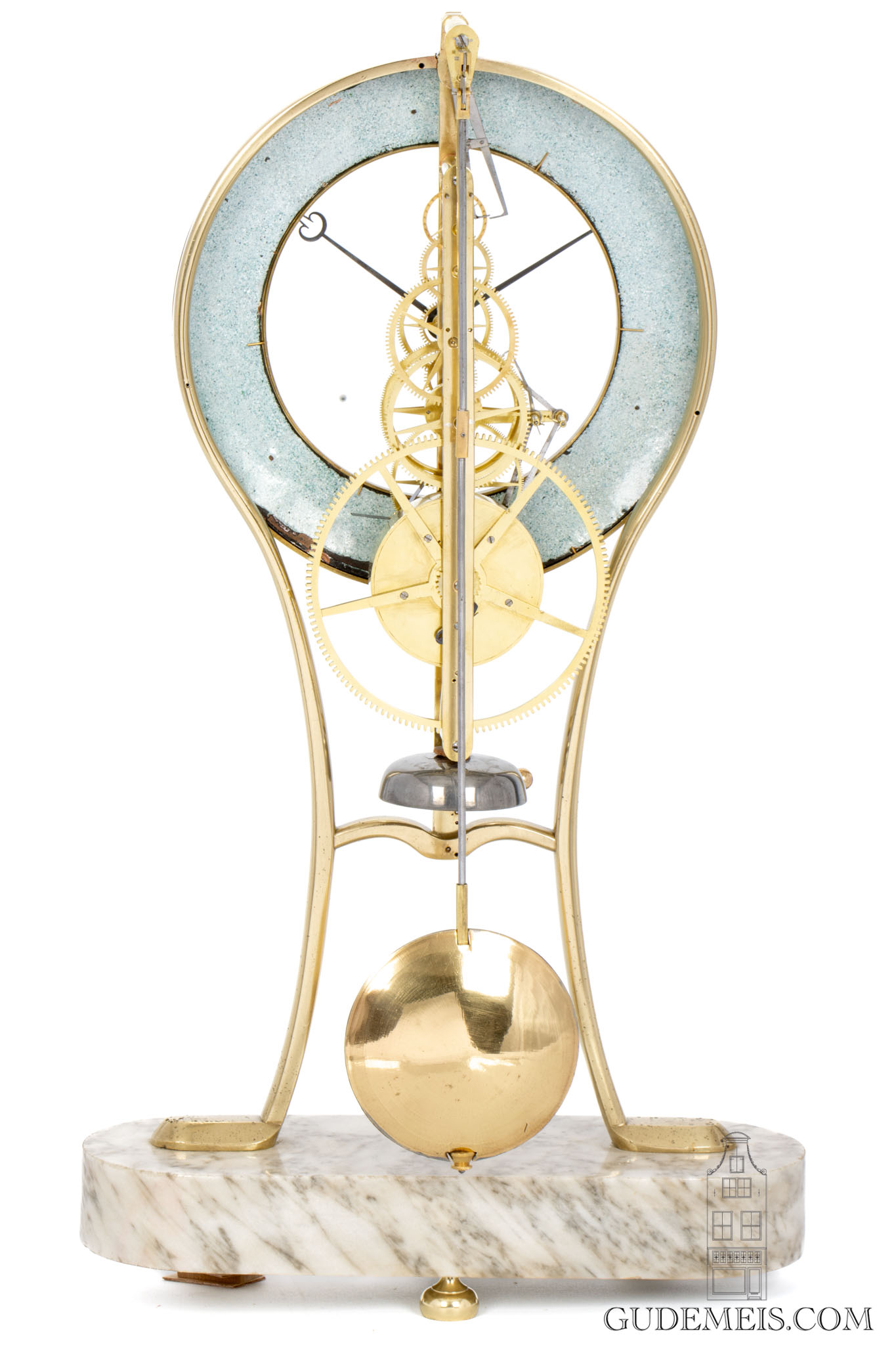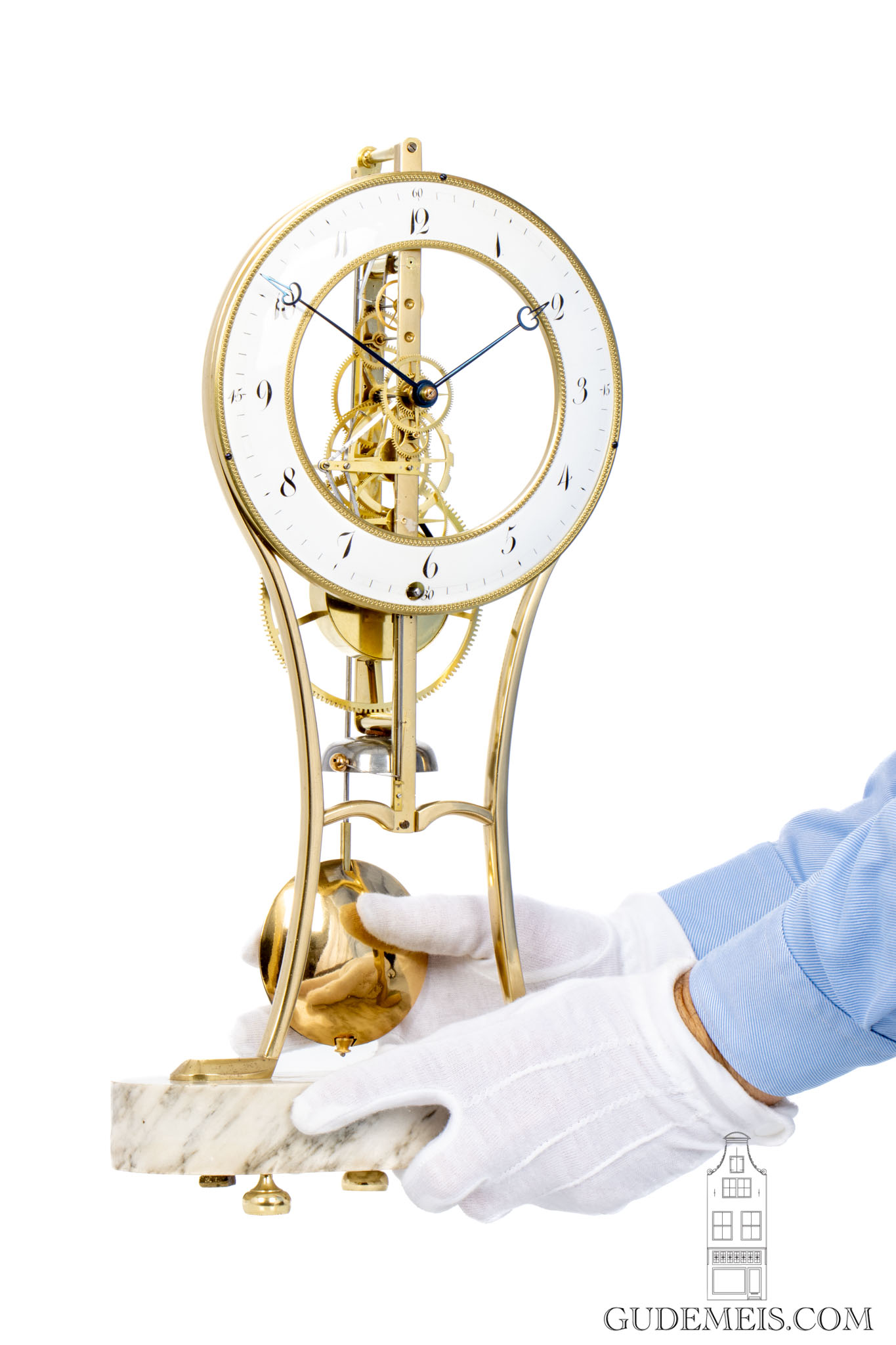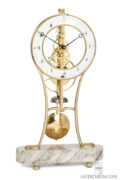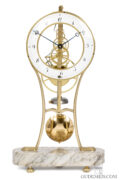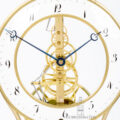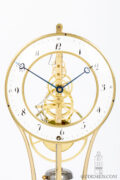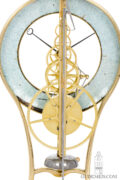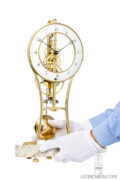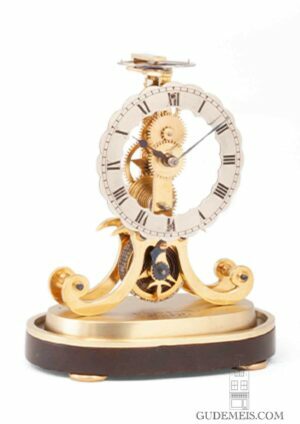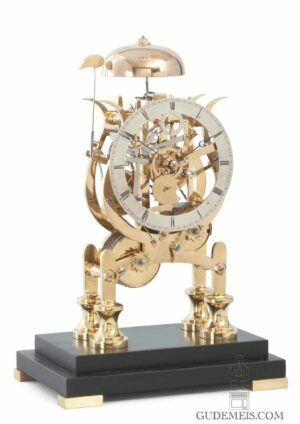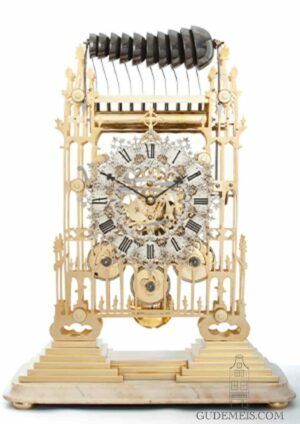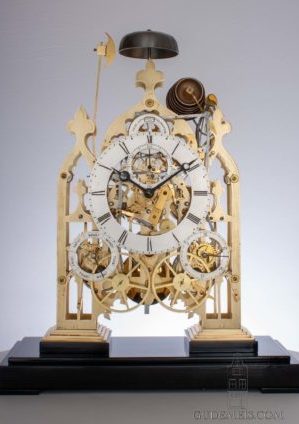A French Empire brass ‘keyhole’ skeleton clock of month duration, circa 1800.
Description
Skeleton clock
In the last quarter of the 18th century in France, clocks appeared in which the case was largely omitted and therefore having a visible movement. It is likely that clients who liked these clocks were interested in technology and found the sight of the movement fascinating. It is not inconceivable that this also had to do with the interest in science and technology that existed in the highest circles of society. Clocks without casings are often called “skeleton clocks” for understandable reasons. This clock belongs to a small group of skeleton clocks that originated in the border region of France and Switzerland. It is characterised by a frame shaped like a keyhole and very finely built wheelwork. There is also something else special about this beautiful clock. The striking works by means of a small spring barrel that is wound up by the wheels of the going train. This remarkable feature is seen more often with clocks made in this tradition. It makes this stylishly undecorated clock not only beautiful but also interesting for those who look a bit further.
Arabic numerals
The 17-cm enamel chapter ring is encased in a brass bezel and hasArabic numerals. The fine hands are made of blued steel.
Pinwheel escapement
The movement consists of very finely made and finished wheels and has a duration of at least a month. It is regulated by a pinwheel escapement in combination with a pendulum. The clock has half-hour striking on a bell by means of a countwheel. Remarkably, this striking mechanism is driven by a small slipping spring barrel wound by the going train. So, in effect, the striking train has a remontoir.
Keyhole skeleton clock
The brass frame is shaped like a keyhole and is therefore referred to in English as a ‘keyhole skeleton clock’. The frame is mounted on a Carrara marble oval base on flat round feet.
Literature; Derek Roberts, Continental and American skeleton clocks, pp. 90-93.
